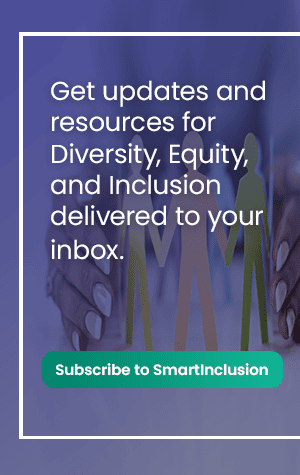My personal journey on the road to social justice began in the 1960’s as one who grew up in a mixed-race family. I learned a few hard lessons about racism and discrimination at an early age. This helped prepare me for the harsh realities of sexism and ageism that awaited me in the workplace.
For decades I’ve held onto the words of Dr. Martin Luther King and Ruth Bader Ginsburg about the long arc of social justice and how real, enduring change happens one step at a time.
In 2016, I worked with long-time leader SHRM Hawaii Denise Tsukuyama, Equal Opportunity Officer/ADA Coordinator at City and County of Honolulu. We co-authored an article about telework/work-from-home as a talent acquisition strategy for recruiting highly skilled, mobility-challenged workers. Seven years and a pandemic later, how many employers have finally embraced that idea?
At the 2018 SHRM Hawaii State Conference, questions resurfaced about the differences between diversity and inclusion and why it matters.
In 2019, SmartSearch co-founder and former CEO wrote “being tolerant does not mean being inclusive,” and explored the need to move beyond mere “tolerance” of differences into “acceptance” and actually wanting to work with people from difference walks of life.
explored the need to move beyond mere “tolerance” of differences into “acceptance” and actually wanting to work with people from difference walks of life.
This inspired me to help organize a learning event with the SHRM Educational Foundation, Hawaii Island District to present an informative program and interactive discussion led by Margarete Hester, Group HR Manager for Enterprise Holdings on Diversity & Inclusion: What Does it Really Mean?
Diversity is defined as all of the characteristics that make individuals different from each other. Diversity in the workplace includes employee characteristics such as personality, work style, religion, race, ethnicity, gender, sexual orientation, having a disability, socioeconomic level, educational attainment, and general work experience.
An inclusive workplace is an environment where everyone is valued for who they are, and differences are embraced.
Further down the road, the Smart Inclusion conversations led to a discussion of how best practices in DEI can increase productivity, improve employee retention and have a positive impact on bottom line results.
Jeff Miller, CEO and Founder of Potentia Workforce, a consulting firm that delivers technology, analytics, and human capital services by leveraging the talents and skills of – and providing opportunities for – often overlooked neurodiverse individuals. Jeff talked about why neurodiversity is the number on competitive advantage businesses should invest in.
He explained how neurodiversity is a set of neurological and cognitive differences – or simply the way different brains work. Neurodiverse individuals are people who are just walking around with a different operating system.
“Neurodiversity makes up about 25% of the population, and many people are surprised by that statistic.”
Another statistic that surprises people is that the average neurodiversity recruitment program delivers a 96% retention rate. When you talk about the great resignation and individuals jumping from jobs, specifically in the millennial and Gen Z strata, having individuals that want to stay with an organization is huge.
Other research shows that when you hire neurodiverse candidates in the right roles, they tend to be about 45% more productive than candidates of similar backgrounds and experience.
Roger Simmons, president and Chief Operating Officer of Crossinculture, a consulting firm that provides cultural competency training to help organizations improve cross-cultural awareness, talked about diversity that works.
This included a look at and how to measure what’s working and what’s not, common misconceptions, and the significant business advantages of having a more diverse work environment.
Roger pointed out that when people with different perspectives work together, there will be conflicts. Yet when we can listen to each other enough, we can understand how things should be right or in accord. It’s okay to have turbulent kinds of relationships. Ultimately, people will feel more empowered when they have the freedom to show up to work as their whole selves; that’s when their creativity kicks in.
“Diversity that works empowers people because they feel that they can contribute. There’s a sense of ownership at a high level of engagement.”
In any business, there are opportunities, and there are challenges. We need both. The opportunity or challenge that embraces differences in approach will breed creativity and innovation. I go into 2023 knowing that we are creating a better future of work through diversity, equity, and inclusion.